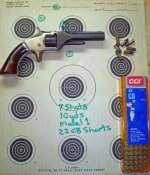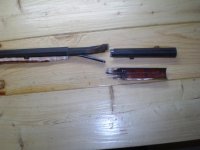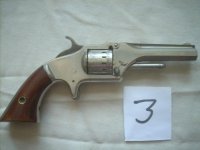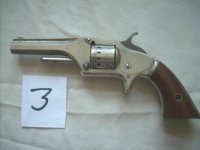Marcus von W.
Member
I have one of the little Manhattan "American Standard Tool Co." copies of the Civil War era S&W "tip-up" Second Model .22 revolvers, and am wondering what would be a safe .22 round to fire in it.
Condition is good, everything works as it should and rotates and locks up properly for what it is.
I'm pretty sure the .22 ammo available back then was loaded with black powder, but don't know how that loading compares to what is out there and available today as far as pressure.
I wouldn't want to damage my little antique. It's not something that I would fire often or a lot - probably just take it out once and put a few rounds through it, then put it back in the safe where it has been the past 25 years, but I would like to have it as a functional firearm, not just an interesting looking paper weight.
Condition is good, everything works as it should and rotates and locks up properly for what it is.
I'm pretty sure the .22 ammo available back then was loaded with black powder, but don't know how that loading compares to what is out there and available today as far as pressure.
I wouldn't want to damage my little antique. It's not something that I would fire often or a lot - probably just take it out once and put a few rounds through it, then put it back in the safe where it has been the past 25 years, but I would like to have it as a functional firearm, not just an interesting looking paper weight.






